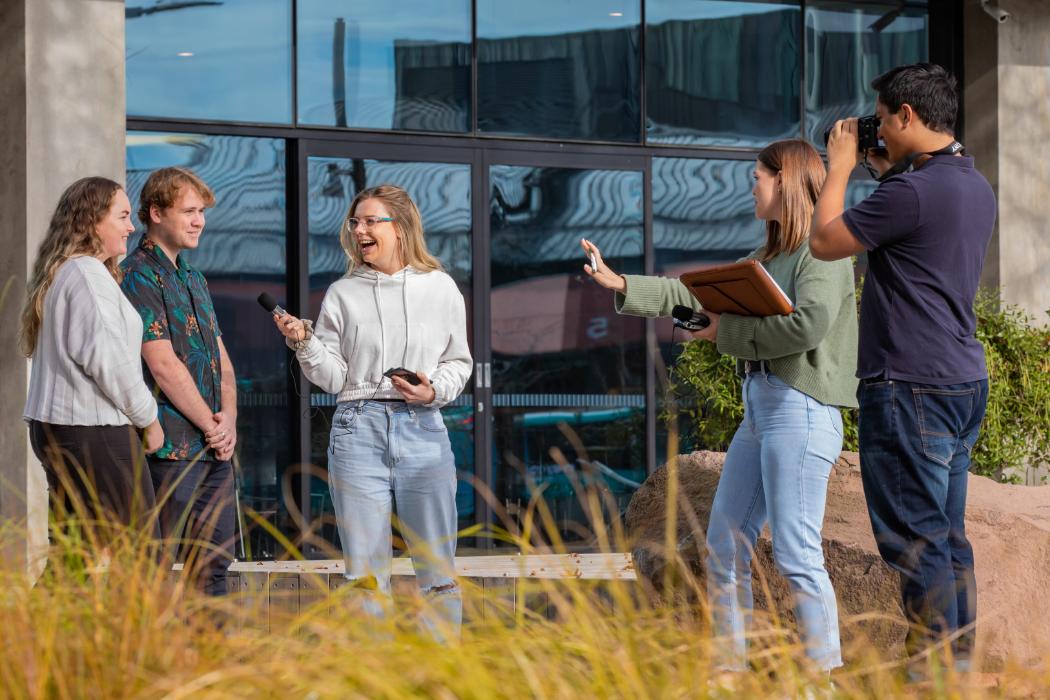While she acknowledges that some individuals and industry bodies are investigating more environmentally sustainable options, she sees those efforts as ad hoc, without an overarching plan.
“A green burial is a nice idea but actually, for most, it’s unrealistic – they’re expensive and unsustainable. The idea is romanticised, but most people don’t understand the realities of it.”
Learning more about ways to improve the situation is the focus of Associate Professor McManus’s $824,000 Te Pūtea Rangahau a Marsden grant (for the research project titled: The Greening of Death in Aotearoa: Co-designing Sustainability adaptations in body disposal).
Over the next three years, the Sociology lecturer and her team will gather and integrate local knowledge to help speed up pathways in the greening of death.
“This is about finding forms of body disposal that can facilitate a more effective connecting up of existing and new practices, processes and infrastructure that can move us to a reduction in carbon footprint.
“We will talk to people all over the country to find out what techniques are being used. Some cool things are happening but they’re not being connected up. We know that Māori have sustainable methods of traditional burials, as do other cultures. How can these be used and or learnt from?
“We have people around the country interested in green burials, but one issue is space. For example, an eco-burial site was set up in Diamond Harbour near Christchurch with 12 plots – it was fully subscribed before the site was complete. Options are still limited throughout the country,” Associate Professor McManus says.
“There are a lot of presumptions about what green burials are, and in truth they aren’t perfect. They can affect the water table, for example, if not situated or managed well, and in fact a body that isn’t embalmed still leaches toxins into the soil. Some of my work is about challenging the idea of what a green burial actually is.”
Associate Professor McManus would also like to see a better understanding of alternative strategies that aren’t used in New Zealand currently, such as alkaline hydrolysis or ‘water cremation’. This technique was used as a greener alternative to cremation by the family of South African Nobel Peace Prize winner Desmond Tutu, who died in December 2021. It is also known as ‘aquamation’.
“It is a clean alternative that involves placing the body in an alkaline solution and then treating it so that it dissolves leaving only a white bone ash and wastewater,” Associate Professor McManus says. “The process is used increasingly overseas but is not legal under New Zealand’s existing burial and cremation legislation. This is something I would love to see happening here in New Zealand.”
The Burial and Cremation Act 1964 is under review and Associate Professor McManus believes change will be rapid once it is updated.
“To make a change we need to broaden our understanding of what a green burial is and how it can be done. This needs to be backed up by legislative changes that facilitate making the greening of death more accessible and sustainable into the future.”
What is a green burial?
Generally, a green burial in New Zealand will include the following elements:
- Bodies are not embalmed or chemically treated
- Burials are made within the upper active soil levels at a minimum of 800mm depth
- Coffins or caskets are made of chemically untreated and unprocessed soft woods made from sustainable/organic sources
- Shrouds are made of natural fibres such as cotton or wool
- No non-biodegradable accessories
- The burial site is filled with an un-compacted compost-soil mix to allow aeration for decomposition and over-planted with a native tree or shrub.










